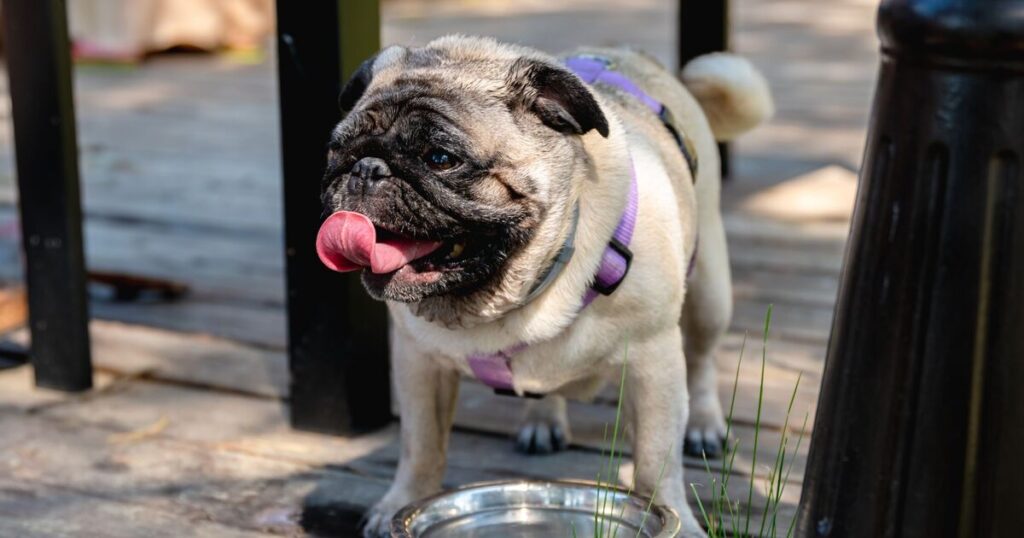
As Britain swelters in yet another scorching heatwave, the RSPCA has delivered a warning to pet owners tempted to take their furry friends out in the blazing sunshine. The animal welfare charity repeatedly cautions against walking pets during hot spells – yet countless owners continue to ignore their pleas.
But a harrowing video has finally given some dog lovers the wake-up call they desperately needed, showing the devastating reality of what happens when pets overheat during the summer months. The footage, so distressing it carries a TikTok warning, shows a dog gasping on a veterinary table as it desperately tries to lower its body temperature.
The stricken animal can be seen heavily panting whilst battling to breathe, drooling profusely, and appearing unsteady and disoriented.
The charity’s urgent message states: “Involving your pooch in your family outings may feel like the right thing to do this summer, but when the weather gets hot there are some considerations and practical steps that we must take to ensure our dog’s health and welfare is always being prioritised.
“Dogs sadly die on hot walks. If in doubt, don’t go out! Spotting the signs of overheating could mean the difference between life and death.”
Symptoms of heatstroke in dogs:
The RSPCA has identified the following warning signs that owners must watch for:
- Collapse: heat exhaustion, when severe, could cause the dog to collapse.
- Confusion or disorientation: dehydration might make the dog lightheaded or dizzy, affecting their movements.
- Dehydration: this can present as a dry nose, sunken eyes, heavy panting, infrequent urination, and tiredness.
- Drooling: if the dog is drooling more often, and it’s thicker and stickier, this could be a symptom of heatstroke.
- Increased heart rate: check a dog’s heartbeat by placing your hand on their chest, just behind their front leg’s elbow. A fast pulse could signal overheating (remember that the dog’s size affects their resting heart rate: big dogs have slower pulses, whereas small dogs have quicker pulses).
- Muscle spasms: these heat cramps are often associated with dehydration, and might appear as shivering and shaking despite the high temperatures.
- Noisy breathing: breathing noisily or faster than normal, especially if the dog is a flat-faced breed, is a sign of overheating.
- Panting: dogs cool down by panting, so the more they pant, the hotter they are.
- Red gums and tongue: whilst this is often a symptom of a dental problem, when coupled with panting and heavy breathing, red gums can occur when a dog is overheating.
- Seizures: heatstroke, especially in dogs with epilepsy, can trigger seizures and loss of consciousness.
- Vomiting and diarrhoea: stool that’s softer than normal can be a symptom of heat exhaustion. Stool and diarrhoea that contains blood is a sign that the heatstroke has become more severe.
- Weakness and lethargy: the dog might sleep more, have trouble standing or walking, or generally seem more sluggish with their movements.
Warning: Distressing video
Whilst all dogs can suffer from overheating in warm conditions, those with underlying health issues, flat-faced breeds and dogs with dense coats face the greatest danger. If you observe your dog struggling in the heat, it’s crucial to halt movement, provide them with water and seek shade immediately.
Keep a close watch on them until they recover or if their condition deteriorates, safely transport them to a vet while attempting to lower their body temperature during the journey.
You can assist in cooling them down by dousing them with water, immersing their body in cool water, or generating a breeze by fanning them.
 Latest World Breaking News Online News Portal
Latest World Breaking News Online News Portal






